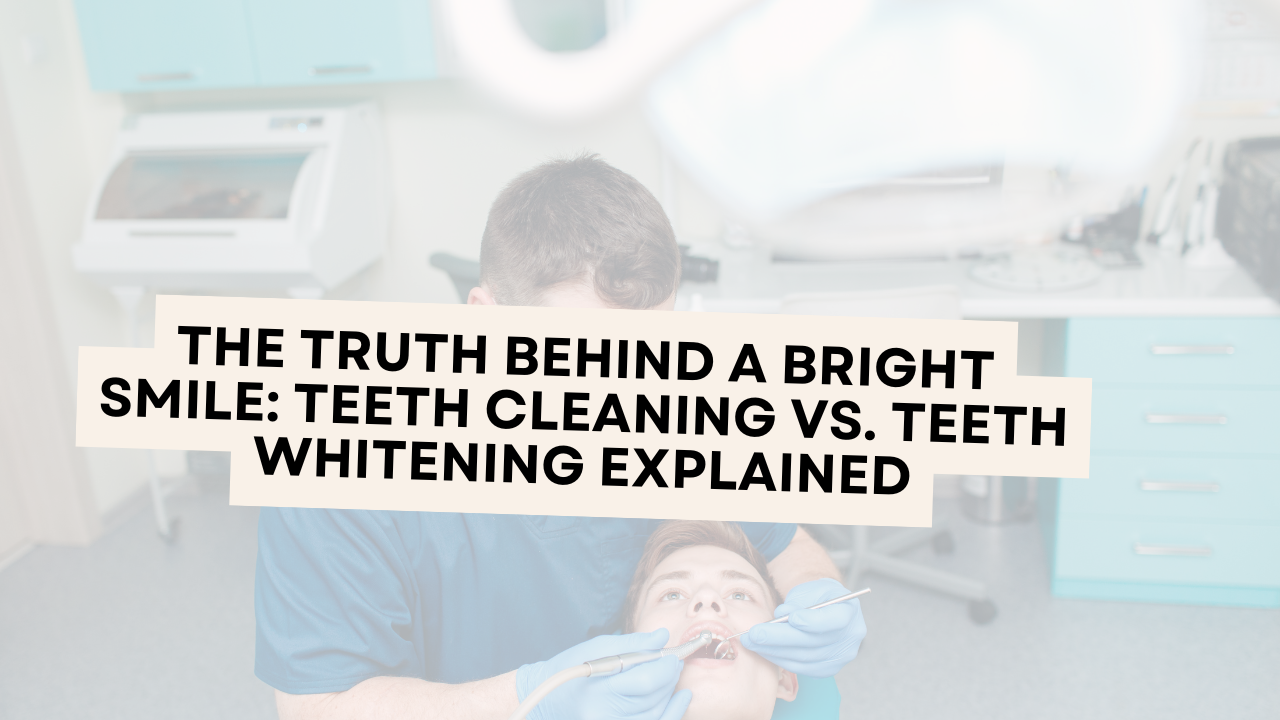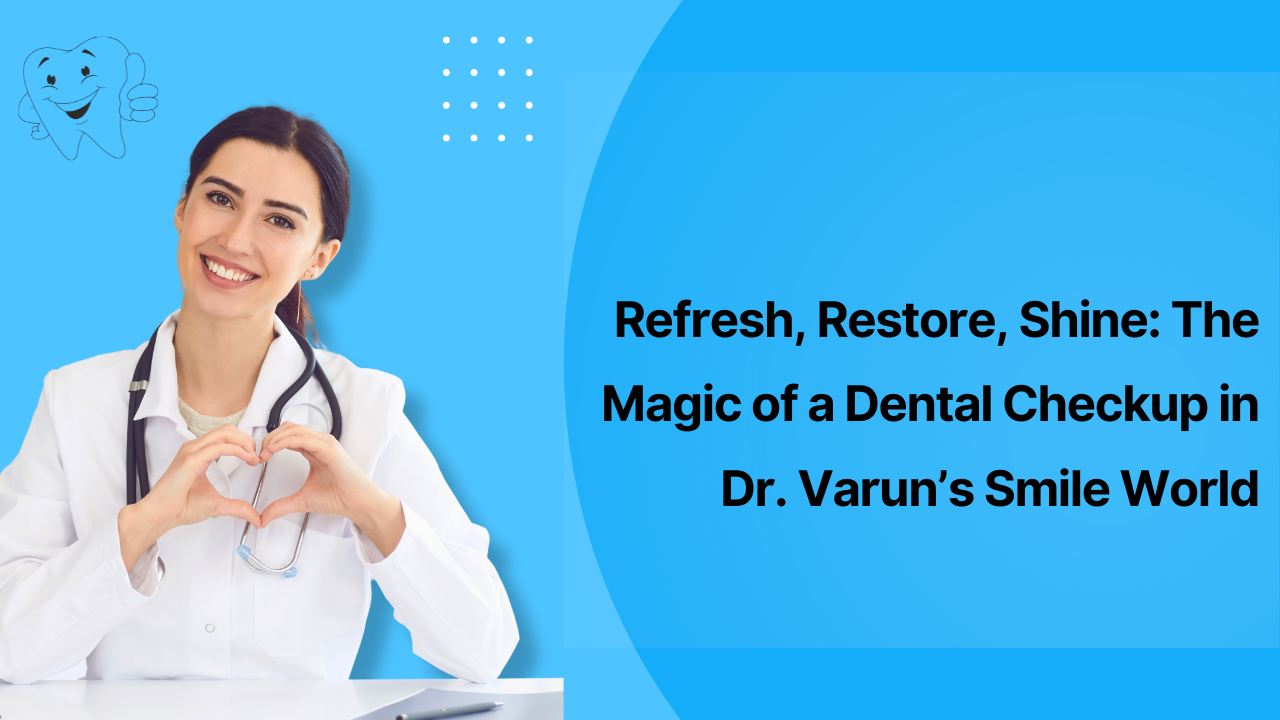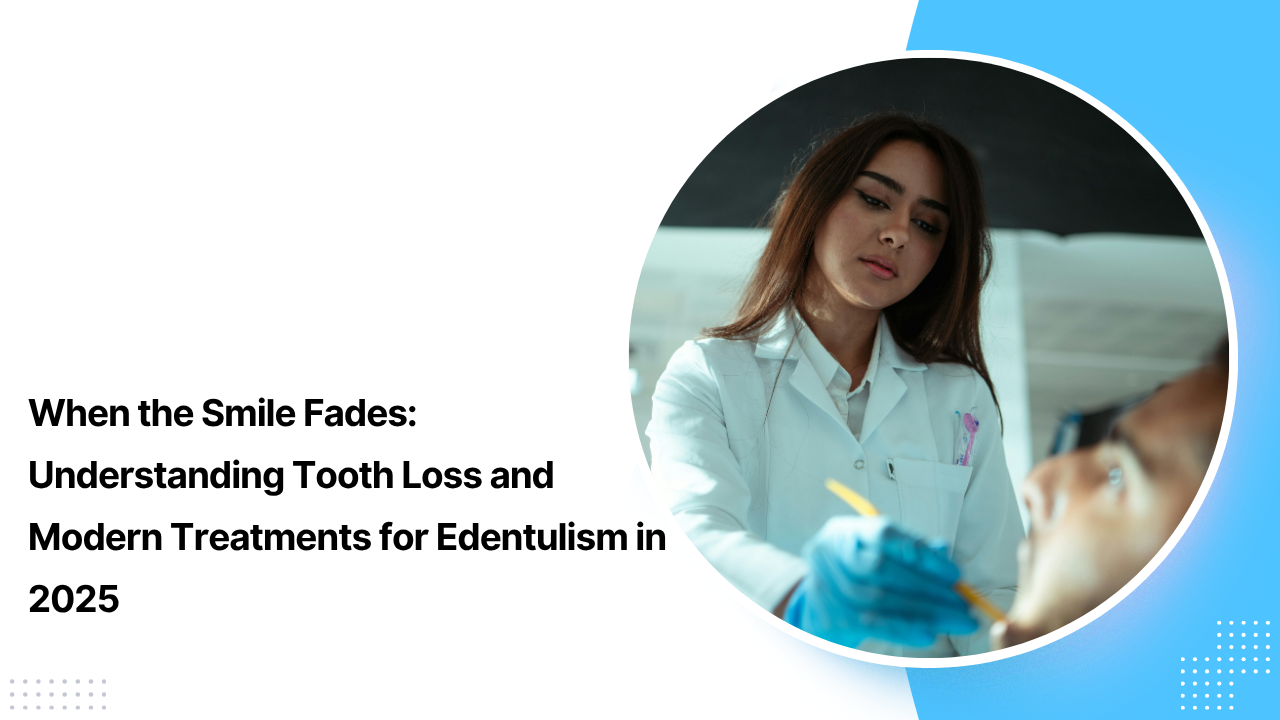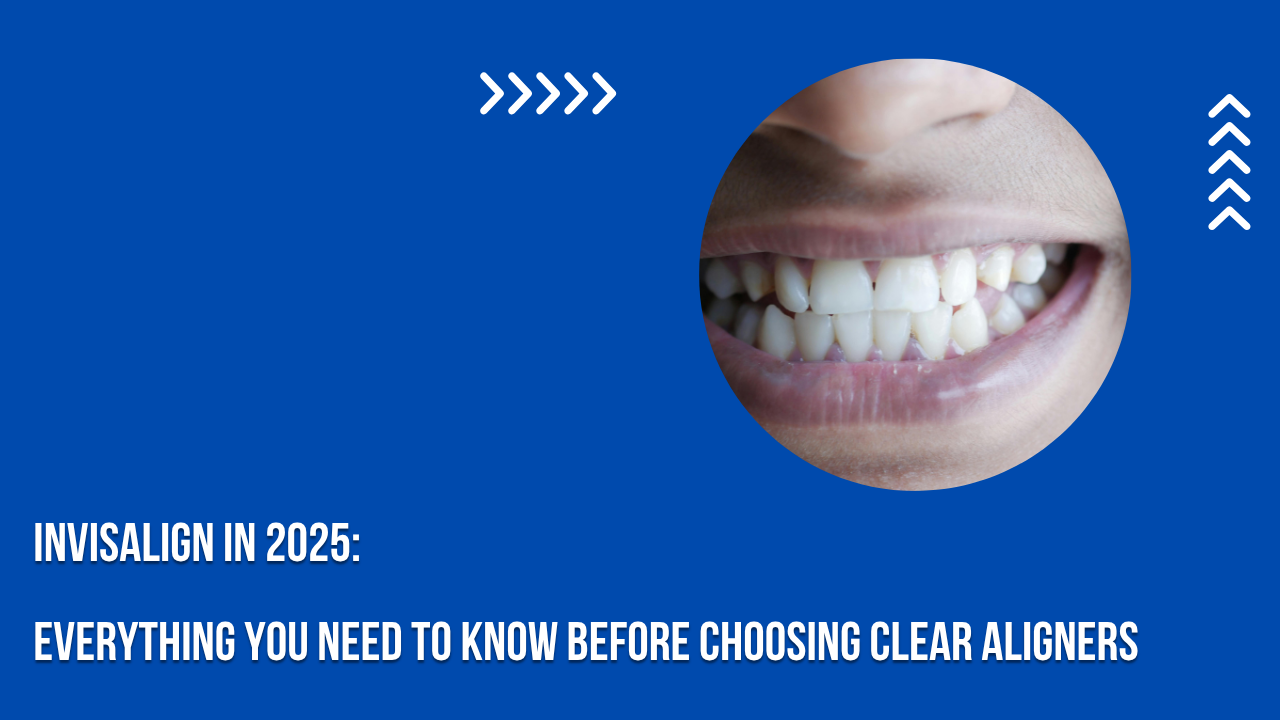It’s common to think that a brighter, whiter smile means better oral health—but that’s not always true. In today’s age of selfies, video chats, and a focus on appearance, our teeth are constantly visible. Many people quickly opt for whitening treatments when their teeth appear dull or stained. However, what they might need is a professional dental cleaning.
So, what distinguishes teeth cleaning from teeth whitening? Are they simply different terms for the same procedure, or do they serve distinct purposes? Let’s clarify the differences to help you understand what your smile truly requires.
Why This Topic Remains Important
By 2025, oral health will go beyond just preventing cavities or gum disease. It’s about feeling confident, looking refreshed, and taking proactive steps for your overall health. Both teeth cleaning and whitening play key roles in this, but they serve very different functions. As dental technology advances and cosmetic dentistry becomes more common, it’s crucial to understand what each treatment offers and when it’s appropriate.
Teeth Cleaning: The Foundation of Oral Health
Teeth cleaning might not be glamorous, but it’s vital. Even with daily brushing and flossing, it’s impossible to reach every spot in your mouth. Over time, food debris, plaque, and tartar accumulate—especially near the gums.
What does teeth cleaning involve?
- Scaling: Removing hardened tartar (also called calculus) using ultrasonic tools or manual instruments.
- Polishing: After debris removal, teeth are polished with a gentle abrasive paste to eliminate surface stains.
- Fluoride treatment (optional): Some cleanings include fluoride application to strengthen tooth enamel.
Benefits of regular teeth cleaning:
- Prevents gum disease and tooth decay
- Eliminates bad breath by removing bacteria that cause odors
- Maintains healthy gums and strong teeth
- Supports overall health (there’s a connection between gum disease and heart disease!)
- Allows early detection of dental problems
How often should you get it?
Most dentists suggest a professional cleaning every six months. If you smoke, wear braces, or tend to accumulate plaque, you might need cleanings more often.
Teeth Whitening: The Cosmetic Game-Changer
Teeth whitening focuses on improving appearance. Teeth naturally discolor over time due to food, drinks, medications, and aging. Whitening treatments aim to reverse this by targeting deep stains and brightening your smile.
What happens during whitening?
- A bleaching agent (usually hydrogen peroxide or carbamide peroxide) is applied to the teeth.
- Sometimes, LED light or laser is used to boost the whitening effect.
- The procedure can last from 30 minutes to over an hour, depending on the method.
- There are also at-home options like whitening strips, trays, and pens, though these tend to be less effective and take longer.
What whitening does not do:
- It doesn’t clean teeth or remove tartar.
- It won’t repair cavities, cracked enamel, or gum disease.
- It can’t whiten crowns, veneers, or fillings
Teeth Cleaning vs Teeth Whitening: Purpose and Priorities
Let’s break it down:
| Purpose | Teeth Cleaning | Teeth Whitening |
| Primary Goal | Oral hygiene and prevention | Cosmetic enhancement |
| Treats | Plaque, tartar, early gum disease | Yellowing, stains, dull tooth color |
| Performed By | Dental hygienist or dentist | Dentist or trained professional |
| Tools Used | Scalers, polishers, fluoride | Bleaching gels, lights, trays |
| How Often Needed | Every 6 months or as recommended | 1-2 times a year (not always necessary) |
| End Result | Healthy mouth, clean teeth | Brighter, whiter smile |
Which Option Do You Need?
Here’s the straightforward answer: it depends on your individual goals.
- If your gums bleed when brushing or flossing, you have bad breath, or it’s been over a year since your last dental visit—start with a professional cleaning.
- If your teeth are healthy but look stained or lackluster—whitening might be the right choice.
- If you plan to do both, always get a cleaning before whitening. Whitening over tartar or plaque can cause uneven results and increase sensitivity.
Why Whitening Can’t Replace Cleaning
Many people mistakenly believe whitening alone will make their teeth look clean, so they skip the cleaning.
However, whitening doesn’t work effectively on unclean teeth. Plaque and tartar act as barriers that prevent bleaching agents from working properly. This leads to uneven coloring, sensitivity, and wasted money.
Think of it like painting over a dirty wall—you might change the color, but the underlying issues remain, and the finish won’t be smooth.
Commonly Overlooked Points
Even those who have whitened their teeth for years sometimes miss these important facts:
- Enamel health is important: Whitening agents penetrate enamel. If your enamel is already weakened by acids or aggressive brushing, whitening could make it worse.
- Gum health matters: Inflamed or infected gums can become irritated or chemically burned by whitening treatments.
- Whitening results aren’t permanent: Factors like diet, smoking, and natural saliva affect how long whitening lasts.
Aftercare and Maintenance
Whether you’ve had a cleaning, whitening, or both, keeping your smile bright requires consistent care.
Simple habits to protect your results include:
- Brushing twice daily with fluoride toothpaste.
- Flossing daily or using interdental brushes.
- Rinsing after consuming staining foods or drinks such as coffee, tea, red wine, or turmeric.
- Drinking plenty of water throughout the day.
- Avoiding smoking or tobacco products.
- Using a straw when drinking dark beverages.
- Choosing dentist-approved whitening toothpaste if needed.
Dental Innovations in 2025
Dental care has advanced significantly, and 2025 brings several notable improvements:
- Low-sensitivity whitening gels are now common, reducing the discomfort often linked to bleaching.
- Natural whitening agents like PAP (Phthalimidoperoxycaproic Acid) are emerging as gentler alternatives to peroxide-based products.
- Air-polishing tools use fine powders such as glycine or erythritol to gently and effectively remove surface stains during cleanings.
- AI-powered dental scans help customize cleaning and whitening treatments for the best results.
If it’s been a while since your last dental visit, you can expect a more comfortable and personalized experience than in previous years.
Final Checklist: Things to Consider Before Scheduling Your Dental Appointment
Use this quick guide to determine what to request during your next dental visit:
- Have I had a professional dental cleaning within the past six months?
- Are my gums healthy, without any bleeding or swelling?
- Do my teeth appear yellowed or stained even after brushing?
- Am I getting ready for an event where my smile will be noticed?
- Have I ever felt sensitivity during teeth whitening treatments?
If you answered “yes” to the first two questions and “no” to the rest, it’s likely time for a cleaning. If your teeth are healthy and you want to add some extra brightness, whitening might be the next step.
In conclusion
A clean smile equals a healthy smile, while a white smile is an enhanced one. These two should not be confused. Before aiming for that flawless white smile, ensure your oral health is in good shape. Teeth cleaning is the foundation; whitening is the enhancement. Think of it like building a solid base before adding decorations.
Ultimately, the best smile is both bright and healthy—and that begins with knowing what your teeth truly need.




